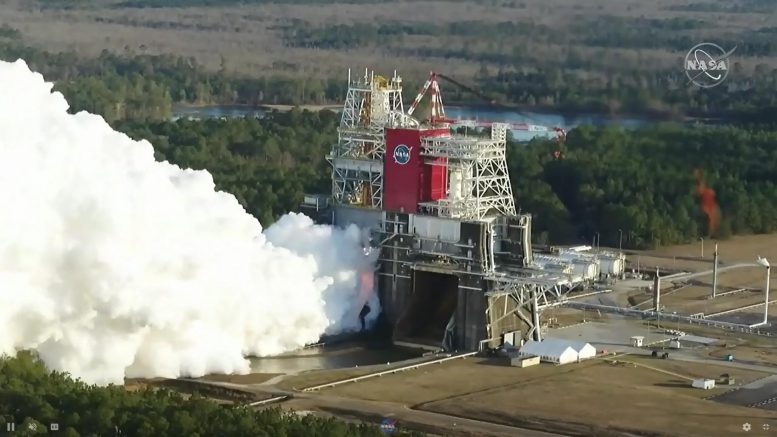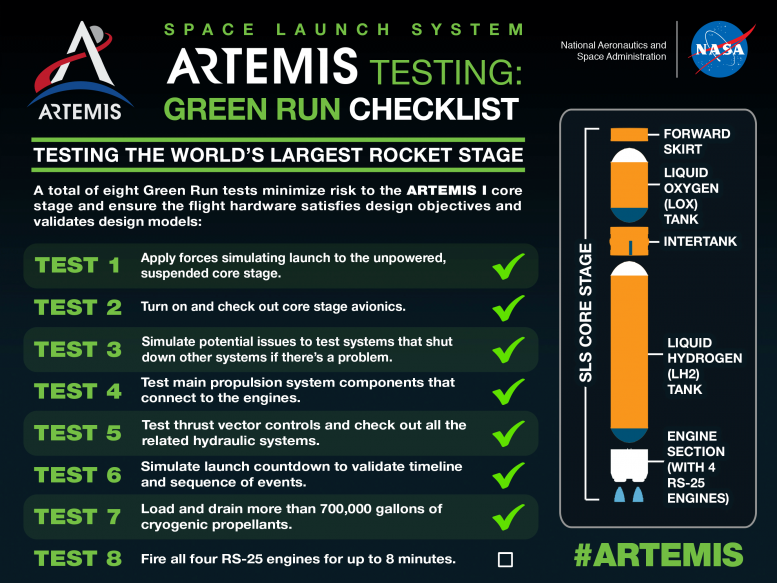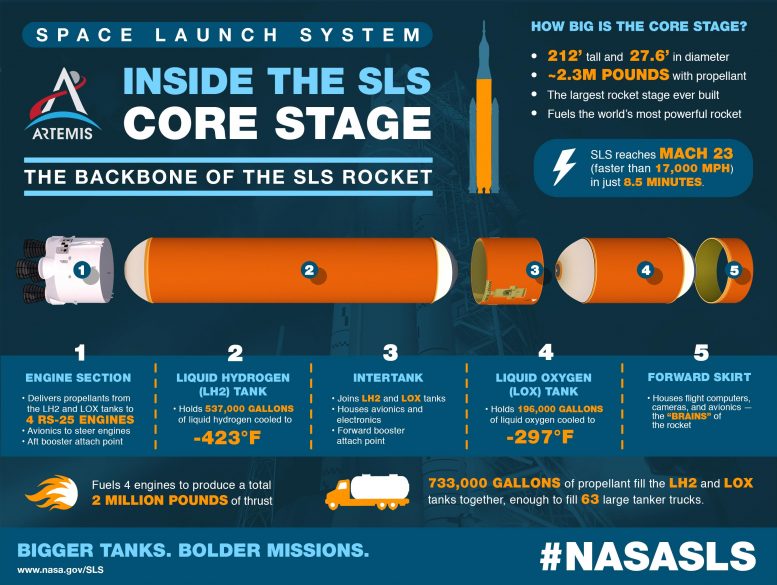
NASA is targeting a two-hour test window that opens at 3 p.m. EDT Thursday, March 18, for the second hot fire test of the core stage for the agency’s Space Launch System (SLS) rocket at NASA’s Stennis Space Center near Bay St. Louis, Mississippi.
The agency plans to begin live coverage on NASA Television, the agency’s website, and the NASA app approximately 30 minutes before the hot fire. The team will refine the timeline as it proceeds through operations. NASA will provide updates on the operations and the target hot fire time at @NASA and the Artemis blog.
On test day, engineers will power up all the core stage systems, load more than 700,000 gallons of cryogenic, or supercold, propellant into the tanks, and fire the rocket’s four RS-25 engines at the same time to simulate the stage’s operation during launch, generating 1.6 million pounds of thrust.
A post-test briefing will follow on NASA Television approximately two hours after the test.

The hot fire is the eighth and final test of the Green Run series to ensure the core stage of the SLS rocket is ready to launch Artemis missions to the Moon, beginning with Artemis I. The core stage includes the liquid hydrogen tank and liquid oxygen tank, four RS-25 engines, as well as the computers, electronics, and avionics that serve as the “brains” of the rocket.

The first in a series of increasingly complex missions, Artemis I will test the SLS rocket and Orion spacecraft as an integrated system ahead of crewed flights to the Moon. Under the Artemis program, NASA is working to land the first woman and the next man on the Moon to pave the way for sustainable exploration at the Moon and future missions to Mars.
Never miss a breakthrough: Join the SciTechDaily newsletter.